How to use SETUID SETGID and Stickybit Permissions;Those appear to be radically different examples (they're not, actually)The following video shows you how to use chmod and chown to change up file permissions It also goes over the various settings you can apply to files with chmod Here is a quick cheat sheet for chmod 7 = 421 (read/write/execute) 6 = 42 (read/write) 5 = 41 (read/execute) 4 = 4 (read) 3

Linux Command Line Cheat Sheet
Chmod permissions cheat sheet
Chmod permissions cheat sheet-Special File Permissions (setuid, setgid and Sticky Bit) Converted by Wesley Hill;The general chmod command syntax is the same command permissions directory/file Here is an example How do I remove the read permissions from others for file2 by using symbolic mode?



Bash Cheat Sheet 5 Techutils In
Understanding and Setting UNIX File Permissions;The file's group creator (group) has read permissions rwrr Others have read permissions represented by the last bits rwrr Now, let's see the default permission values for a directory Let's say the directory chmod_directory was created with the default permissions of 755 Unlike files, a directory has files in itLinux Chmod Permissions Cheat Sheet January 31, 17 Set the permissions for a file or directory by using the chmod Read more →
Permissions 400 read by owner 040 read by group 004 read by anybody (other) 0 write by owner 0 write by group 002 write by anybody 100 execute by owner 010 execute by group 001 execute by anybody To get a combination, just add them upContents RHCSA Cheat sheet 3 Archives 3 Permissions 3 Reset root password 3 Virtual Machines 4 LVM Basics 4 Manipulating partitions 4 Fdisk 4 Gdisk 4 Managing Disks 4 Setting up NFS 5 Setting up samba 5 ACL File Permissions 5 Network Configuration 6 NTP 6 Scheduling Tasks 6 Modifying bootloader 6 Yum Repos 6 Using LDAP for SSO 7 Configure ADUmask p S mask Where mask The new permissions mask you are applying By default, the mask is presented as a numeric (octal) value S Displays the current mask as a symbolic value p Displays the current mask along with the umask command, allowing it to be copied and pasted as a future input
Or, to add read and write permissions for the group that owns the file, you would run $ chmodCurl cheatsh/chmod/644 or curl cheatsh/chmod/rwrr chmod u=rw,go=r / 644 / rwrr Linux Permissions Owner Group Public Read X Read X Read X Write X Write Write Execute Execute Execute The text was updated successfully, but these errors were encountered Copy link OwnerFile Permissions – chmod octal file – change the permissions of file to octal, which can be found separately for user, group, and the world by adding 4 – read (r) 2 – write (w) 1 – execute (x) Examples chmod 777 – read, write, execute for all chmod 755 – rwx for owner, rx for group and world For more options, see man chmod



Amazing Useful Raspberry Pi Commands Cheat Sheet Itsubuntu Com


Github Fed Command Line Cheatsheet Unix Command Line Cheatsheet
Linux Chmod Permissions Cheat Sheet Set the permissions for a file or directory by using theThe syntax is something like this $ chmod u/permissions g/permissions o/permissions file or /dir/ So, if I run $ chmod 777 file rwx rwx rwx everybody can do anything with file Or I run $ chmod 744 dir rwx r r only user can read, write and execute, group and others only read dirChmod who,,=permissions name Change the permissions for a file chmod 777 name Allow all users to read, write and execute the file name chmod ux name Allow the user to execute name cp r from to Copy all files and subdirectories from source from to destination to cp from to Copy a file from source from to destination to find



Linux Directory Structure Cheat Sheet Page 1 Line 17qq Com



Frequently Used Cheat Sheet For Linux System Operation And Maintenance Personnel Programmer Sought
On CentOS File Permissions Cheat Sheet # Change file permissions to 775 chmod 775 file # Recursively chmod folder to 600 chmod R 600 folder # Change file owner to user and group to group chown usergroup file s CentOS Cheat SheetPermissions 400 read by owner 040 read by group 004 read by anybody (other) 0 write by owner 0 write by group 002 write by anybody 100 execute by owner 010 execute by group 001 execute by anybody So to manually set permissions, simply add up the columnsChmod Calculator is a free utility to calculate the numeric (octal) or symbolic value for a set of file or folder permissions in Linux servers How to use Check the desired boxes or directly enter a valid numeric value (eg 777 ) or symbolic notation (eg rwxrwxrwx ) to see its value in other formats



Linux Chmod Command Summary With Examples Youtube



The Chmod Command And Linux File Permissions Explained
Here's a Raspberry Pi command cheat sheet for everything from performing software updates to interfacing with GPIO components and more!In Unix and Unixlike operating systems, chmod is the command and system call which is used to change the access permissions of file system objects (files and directories) It is also used to change special mode flags The request is filtered by the umask The name is an abbreviation of change mode chmod Cheat Sheet List Chmod chartHow do I manage permissions?



Shell Tutorial Part 9 Changing Permissions Youtube



Ubuntu Commands A Categorized Cheat Sheet With Examples
Contents RHCSA Cheat sheet 3 Archives 3 Permissions 3 Reset root password 3 Virtual Machines 4 LVM Basics 4 Manipulating partitions 4 Fdisk 4 Gdisk 4 Managing Disks 4 Setting up NFS 5 Setting up samba 5 ACL File Permissions 5 Network Configuration 6 NTP 6 Scheduling Tasks 6 Modifying bootloader 6 Yum Repos 6 Using LDAP for SSO 7 Configure ADSince I could not find one, I composed a cheat sheet myself Since this is a reference page, I will start with the reference tables I shall highlight one permission per line, in red Followed by the chmod command to create it, a common name, and a descriptionThe third number specifies permissions for the owner's user group;Add execute permissions for group $ chmod gx testfile Now, the file's permissions would be r–rxr– Add both write and execute permissions for the file's owner Note how you can set more than one permission at the same time $ chmod uwx testfile After this, the file permissions will be rwxrxr–9 Comments Originally posted October 13, 14 Bash, Shell, Terminal, Command Line cheat sheets linux Ubuntu Set the permissions for a



Unix Linux Command Cheat Sheet Black Mugs Remember The Api



Common Commands Cheat Sheet By Mmorykan Download Free From Cheatography Cheatography Com Cheat Sheets For Every Occasion
Chmod and Chown Owner,group and other permissions can be r,w,x Translated into their decimal equivalents (actually octal but) owner – read=400,write=0,execute=100 group – read=40,write=,execute=10 other – read=4,write=2,execute=1 So add them up and you've got your user permissions for chmodingSpecial File Permissions (setuid, setgid and Sticky Bit) Converted by Wesley Hill;Chmod options mode,mode filename1 filename2 To change the access permissions for a file, you can use $ chmod mode filename To change the access permissions for a directory, you can use $ chmod mode directoryname There is an easy way to set permissions by using octal modes Read (r) permission is given the value 4, write (w) permission the value 2, and execute (x) permission the value 1 Like this



Unix Linux Command Reference Cheat Sheet Docsity



Chmod Chown Chmown To Say Chmod Chown Chgrp Would Be By Tim Chambers Medium
Linux Cheat Sheet Commands In this page, you will find Basic Linux Commands and important ones in the title of Linux Cheat Sheet CommandsAs you know Linux is widely used in Networking World Network Engineers and system Administrators uses this important operation system commands a lot in their Daily routine or critical operation activitiesLinux File Permissions, chmod, & umask;Changing access permissions To change the access permissions for a file or directory use the command chmod mode filename chmod mode directory_name Setting access permissions numerically There is a shorthand way of setting permissions by using octal numbers Read permission is given the value 4, write permission the value 2 and execute
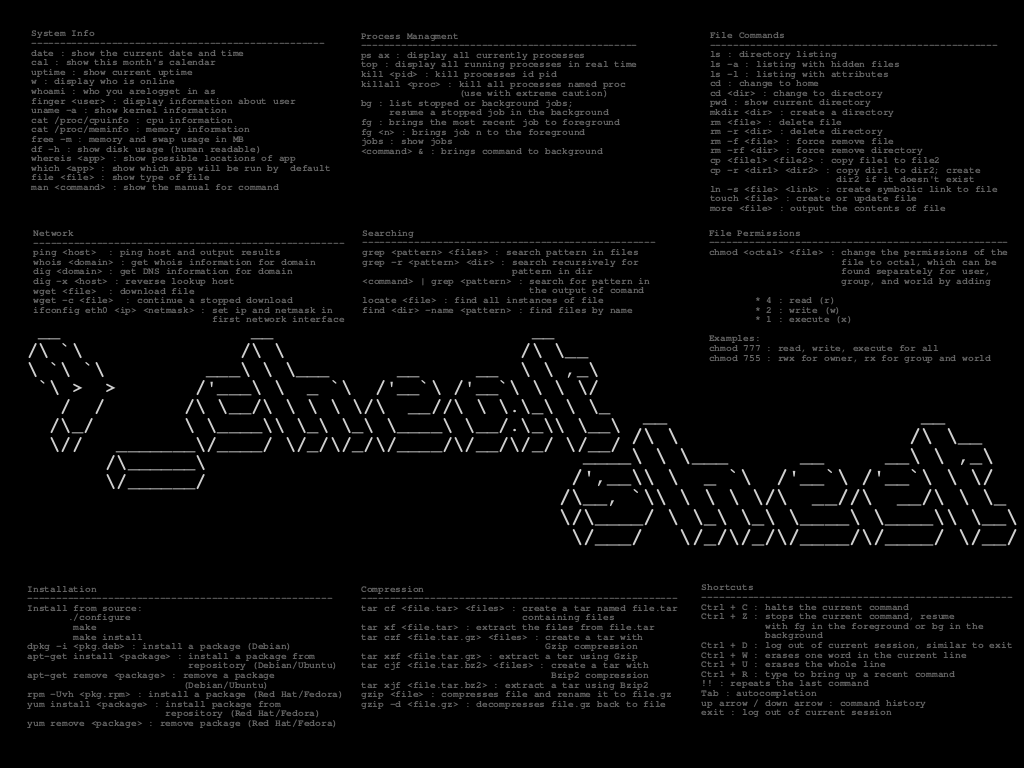


Cheat Sheet Wallpapers Top Free Cheat Sheet Backgrounds Wallpaperaccess



6 Best Linux Unix Command Cheat Sheet Linux Computer Coding Kids Computer
Curl cheatsh/chmod/644 or curl cheatsh/chmod/rwrr chmod u=rw,go=r / 644 / rwrr Linux Permissions Owner Group Public Read X Read X Read X Write X Write Write Execute Execute Execute The text was updated successfully, but these errors were encountered Copy link OwnerYou can modify and improve this cheat sheet hereIn Unix and Unixlike operating systems, chmod is the command and system call which is used to change the access permissions of file system objects (files and directories) It is also used to change special mode flags The request is filtered by the umask The name is an abbreviation of change mode chmod Cheat Sheet List Chmod chart



Unix Permissions The Easy Way Index Of All Chmod Permutations By Semi Koen Towards Data Science



Linux Command Line Cheat Sheet Kalitut
Chmod and Chown Owner,group and other permissions can be r,w,x Translated into their decimal equivalents (actually octal but) owner – read=400,write=0,execute=100 group – read=40,write=,execute=10 other – read=4,write=2,execute=1 So add them up and you've got your user permissions for chmodingA cheat sheet for UNIXbased systems directory and file permissions, including CHMOD examples as well as an explanation as to what it all meansHere's a Raspberry Pi command cheat sheet for everything from performing software updates to interfacing with GPIO components and more!
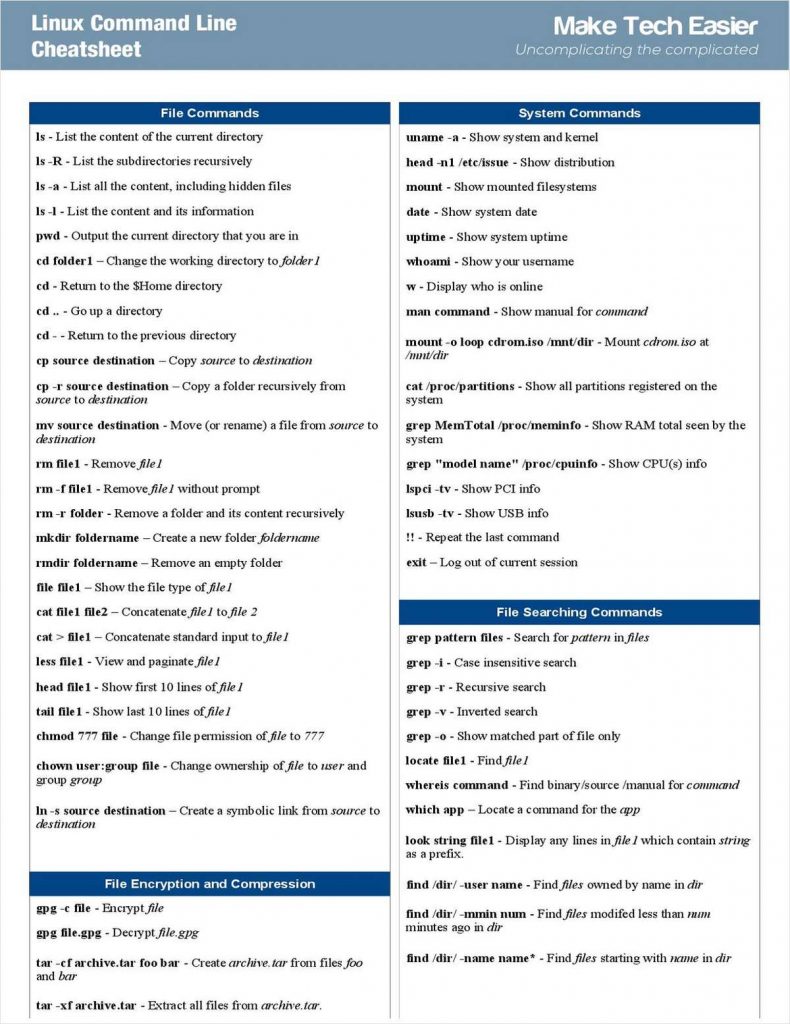


Free Ubuntu E Books Linux Books Download For Free



Unix File Permissions Cheat Sheet Bigbridge
Sudo sudo Running certain commands requires superuser permissions To execute a command using superuser permissions, add sudo beforehandLinux permissions cheatsheet # linux # cheatsheet # ops Max Chernyak Nov 19, 19 Originally published at hakunincom on Jun 15, 14 ・2 min readLinux File Permissions, chmod, & umask;



Bash Cheat Sheet Pages 1 7 Flip Pdf Download Fliphtml5



The Ultimate A To Z List Of Linux Commands
To get standard home directory permissions (with private group as on Ubuntu) use If I do chmod urw on a file that already has execute user permission, level 2 1 year ago Now we need a cheat sheet for that 1 share Report Save level 2 mrjpaxton 0 points · 1 year ago 0 children level 1 1 year ago I've always just thought ofEvery object on your Linux system has a permission mode that describes what actions a user can perform on it There are three types of permissions read (r), write (w), and execute (x)To read a file is to view its contents For example, a text file must have read permission for someone to read the text within If the user wants to add a sentence to that file, it needs write permissionSudo sudo Running certain commands requires superuser permissions To execute a command using superuser permissions, add sudo beforehand


Tip A Cheat Sheet For Those Of You Not Comfortable Using Terminal Jailbreak



Linux Terminal The Ultimate Cheat Sheet Part 2 Dev Community
# chmod or file2 This example removes () the read (r) permission from others (o) for file2Here's another simple exampleCentOS Commands Cheat Sheet wwwopenlogiccom USER MANAGEMENT Command Description alias creates an alias passwrd updates user authentication useradd adds a new user sudo admin privileges who shows currently logged on users groupadd create new group uname print system info SYSTEM MANAGEMENT Command Description apropos search set of database files andLinux permissions cheatsheet # linux # cheatsheet # ops Max Chernyak Nov 19, 19 Originally published at hakunincom on Jun 15, 14 ・2 min read
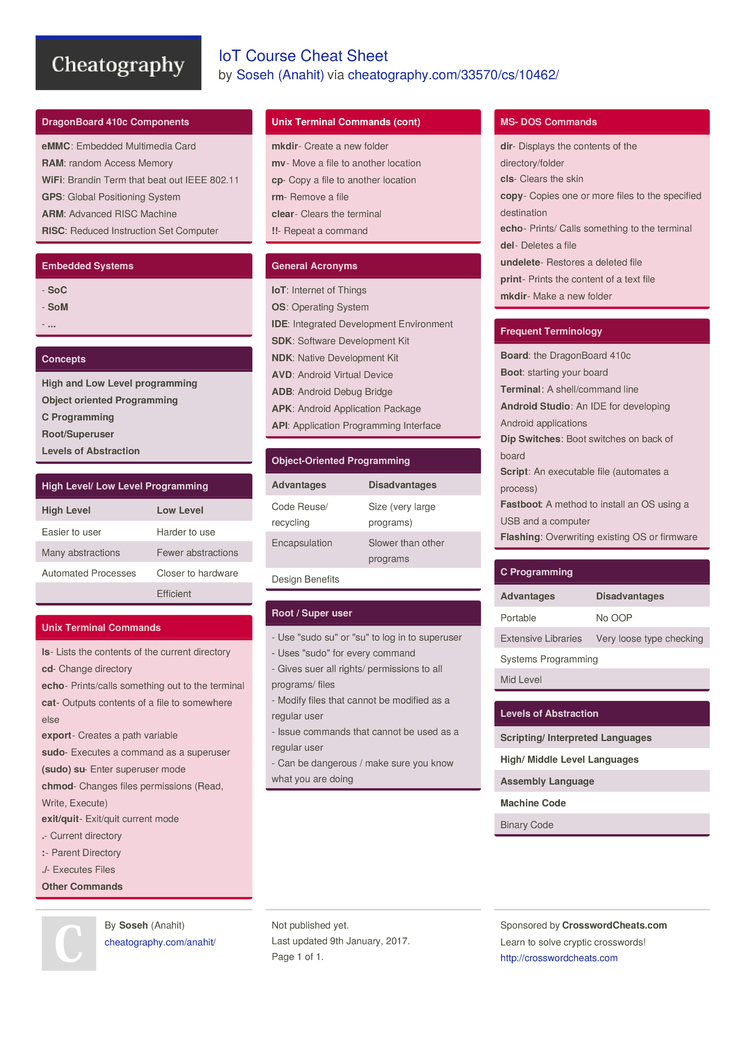


Iot Course Cheat Sheet By Anahit Download Free From Cheatography Cheatography Com Cheat Sheets For Every Occasion
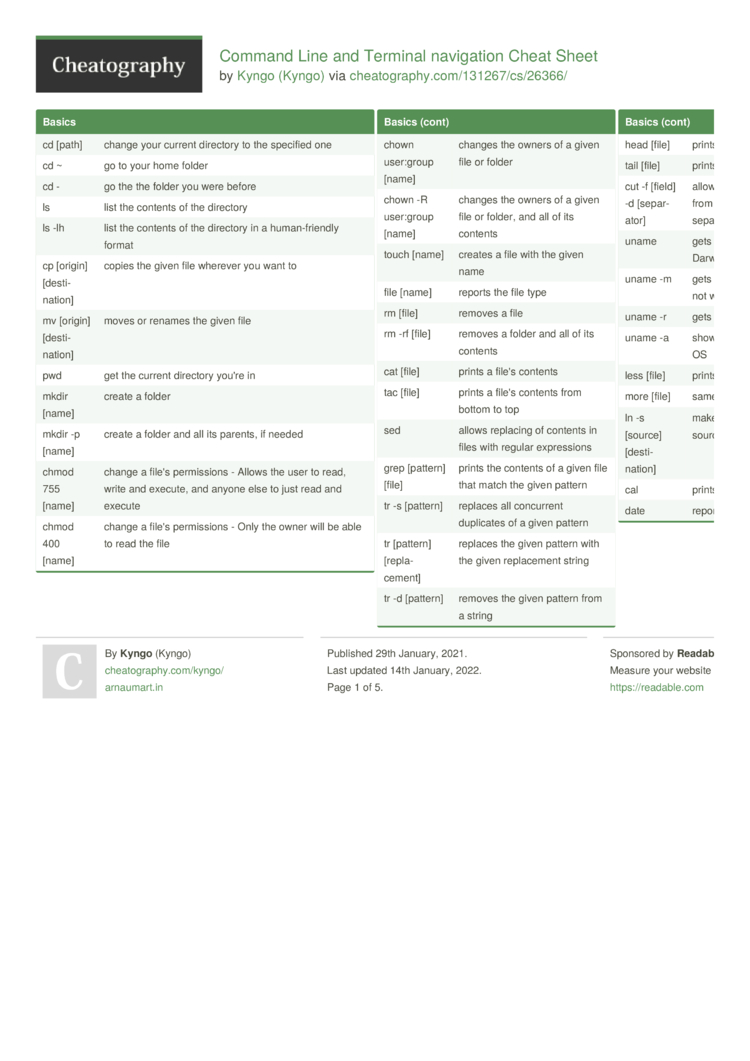


Command Line And Terminal Navigation Cheat Sheet By Kyngo Download Free From Cheatography Cheatography Com Cheat Sheets For Every Occasion
FREE DOWNLOAD This cheat sheet is available as a downloadable PDF from our distribution partner, TradePub You will have to complete a short form to access it for the first time only chmod who,,=permissions name Change the permissions for a file chmod 777 name Allow all users to read, write and execute the file name chmod uUnderstanding and Setting UNIX File Permissions;Chmod 777 file_name Give read, write, and execute permission to owner, and read and execute permission to group and others chmod 755 file_name Assign full permission to owner, and read and write permission to group and others chmod 766 file_name Change the ownership of a file chown user file_name



Bash Cheat Sheet 5 Techutils In



Linux File Permissions Explained Page 1 Line 17qq Com
0 No permissions () 1 Execute permission (x) 2 Write permission (w) 3 Execute and write permissions (wx) 4 Read permission (r) 5 Read and execute permissions (rx) 6 Read and write permissions (rw) 7 Read, write and execute permissions (rwx) For example chmod XYZ path Sets the given numeric permissions for the given pathHow to use SETUID SETGID and Stickybit Permissions;Sudo sudo Running certain commands requires superuser permissions To execute a command using superuser permissions, add sudo beforehand



Linux Permissions Files Directories Users And Groups Data Science Tutorials



Great Lakes User Guide Arc Ts
Umask p S mask Where mask The new permissions mask you are applying By default, the mask is presented as a numeric (octal) value S Displays the current mask as a symbolic value p Displays the current mask along with the umask command, allowing it to be copied and pasted as a future inputYou can modify and improve this cheat sheet hereHere's a Raspberry Pi command cheat sheet for everything from performing software updates to interfacing with GPIO components and more!



Linux Command Line Cheat Sheet By Vespoli Download Free From Cheatography Cheatography Com Cheat Sheets For Every Occasion



Linux Command Line Cheat Sheet
The change mode or chmod command sets permissions The syntax is straightforward chmod permissions resourcename Here are two examples of manipulating permissions for file2 # chmod 740 file2 # chmod u=rwx,g=r,orwx file2 But wait!Add execute permission to the owner chmod ux nameofthefile Remove write permission to others users chmod ow nameofthefile Add read permission to the group chmod gr nameofthefile Remove write and read permission to everyone chmod awr nameofthefileChmod ug=rx filetxt Sets the owner and owner group permissions to read and execute filetxt (and overwrites any previous permissions, if there were any) Another example chmod u=rx,g=w,o= filetxt Sets the owner and owner group permissions separately and erases all permissions for the others Numeric permissions


1280x7 Linux Cheat Sheet Desktop Pc And Mac Wallpaper



Nice Clean Computer Wallpaper That Shows Some Useful Nix Commands Linux Android Wallpaper Business Template



Linux Terminal The Ultimate Cheat Sheet Part 2 Dev Community



Linux Command Line Cheat Sheet



Linux Cheat Sheet Contents Manualzz
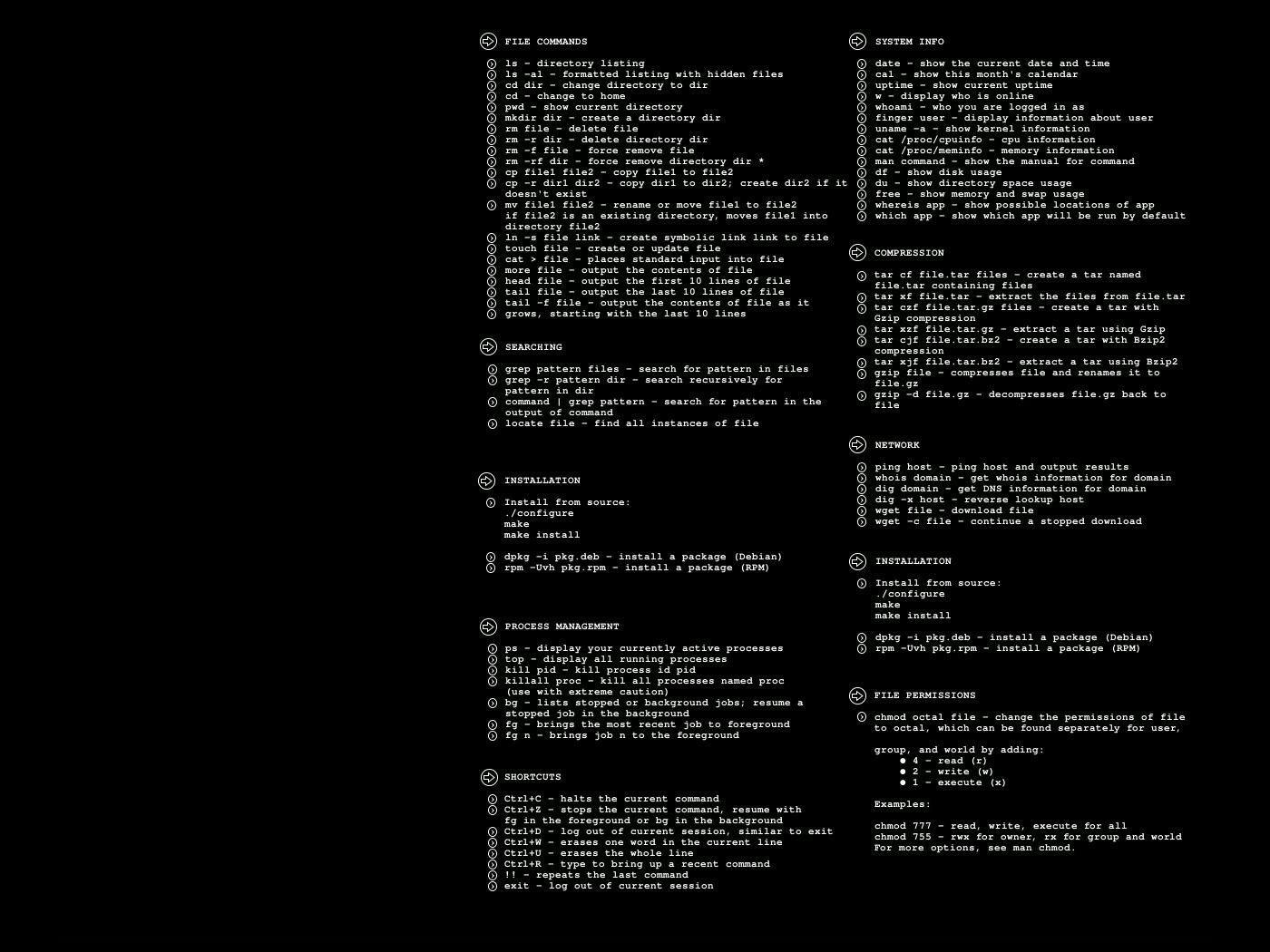


Cheat Sheet Wallpapers Top Free Cheat Sheet Backgrounds Wallpaperaccess



Linux 101 What Is The Suid Permission Techrepublic



Linux Terminal File Permissions Chmod Chown And Chgrp Linux Line Tools Thing 1
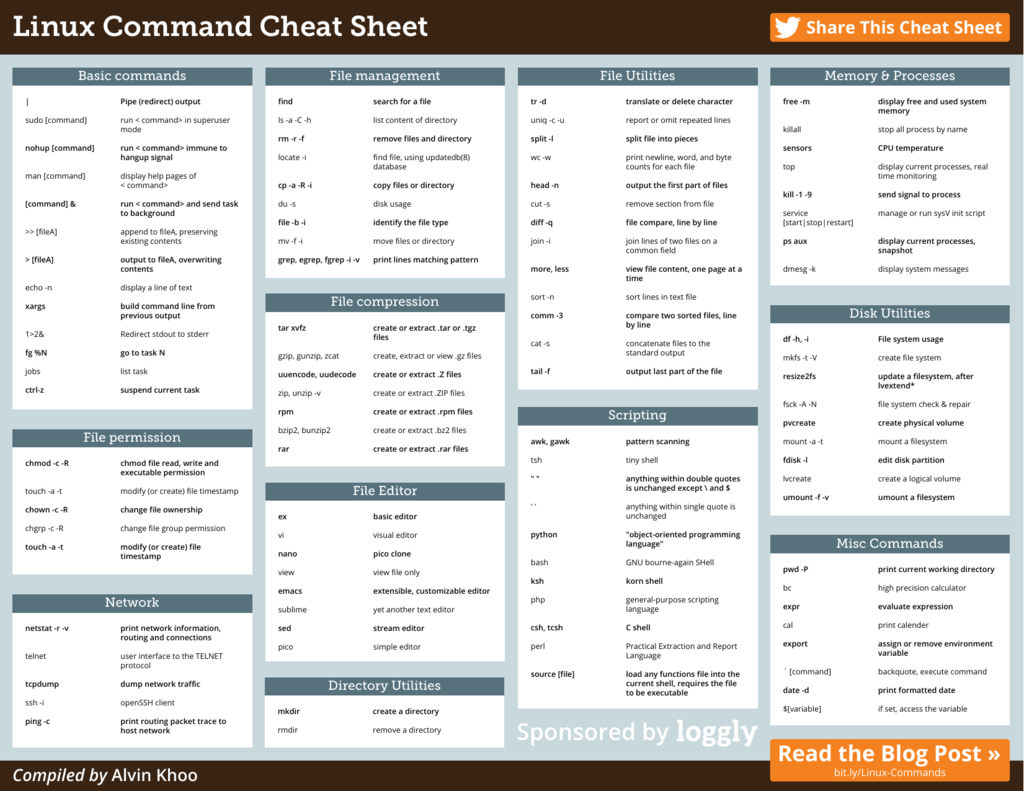


Linux Command Cheat Sheet



Linux Commands Cheat Sheet Definitive List With Examples


Chmod Tutorial Geekscribes



How To Fix Ftp Permission Errors On Google Cloud One Page Zen



Kali Linux Commands Cheat Sheet A To Z



Chmod 660
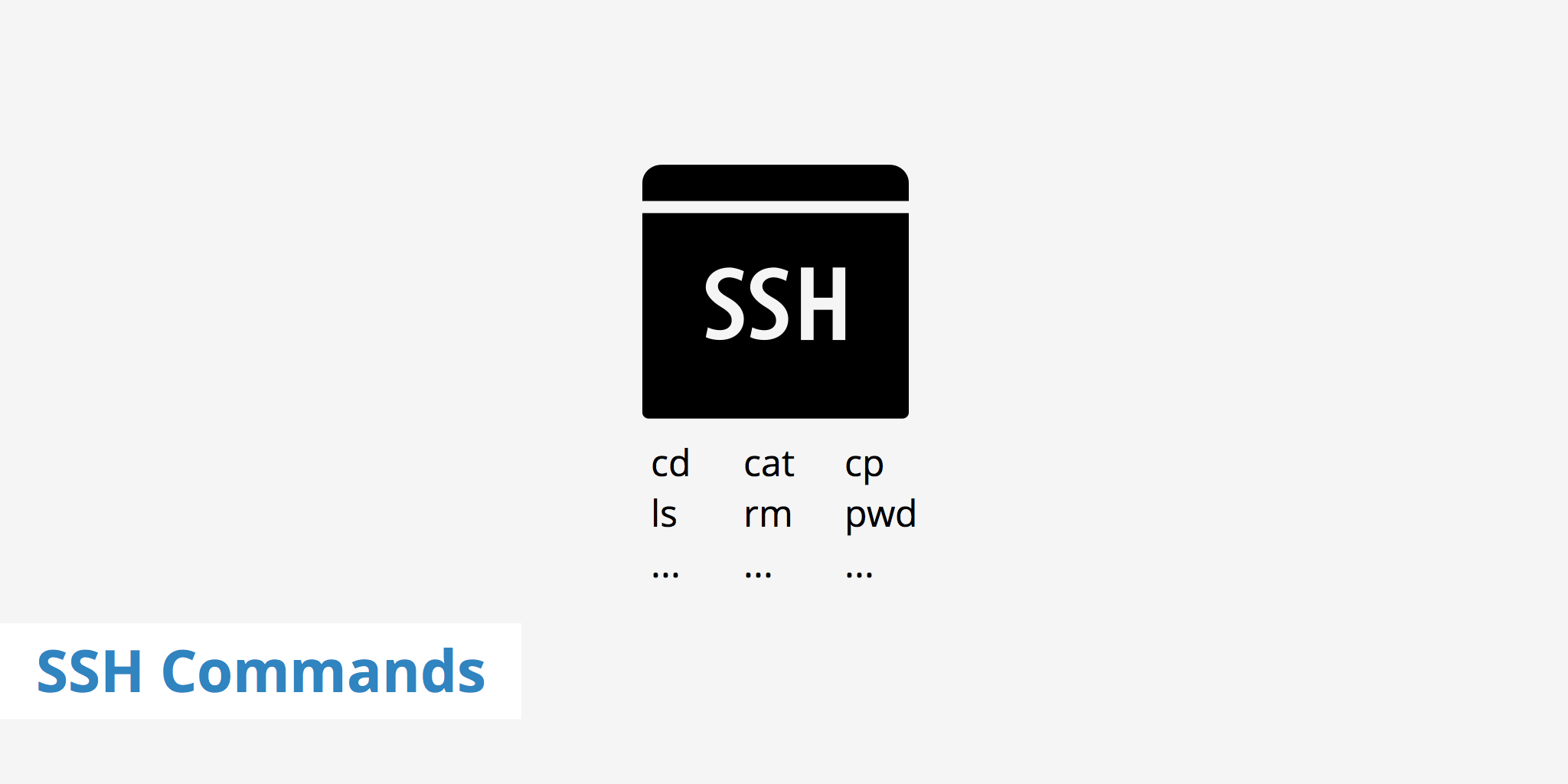


19 Popular Ssh Commands Keycdn Support



Big Data Hadoop Cheat Sheet Download In Pdf Jpg Format Intellipaat



New Bash Linux Cheat Sheet Wallpaper Download Free 40 X 3050px


I Made This Chmod Cheat Sheet And Thought It Might Be Useful Linux4noobs



Duckduckgo A Handy At A Glance List Of Commands For Linux Users And Learners T Co 8rgccgsgmh Thanks To Mihir Rane Http T Co X76di7nsus
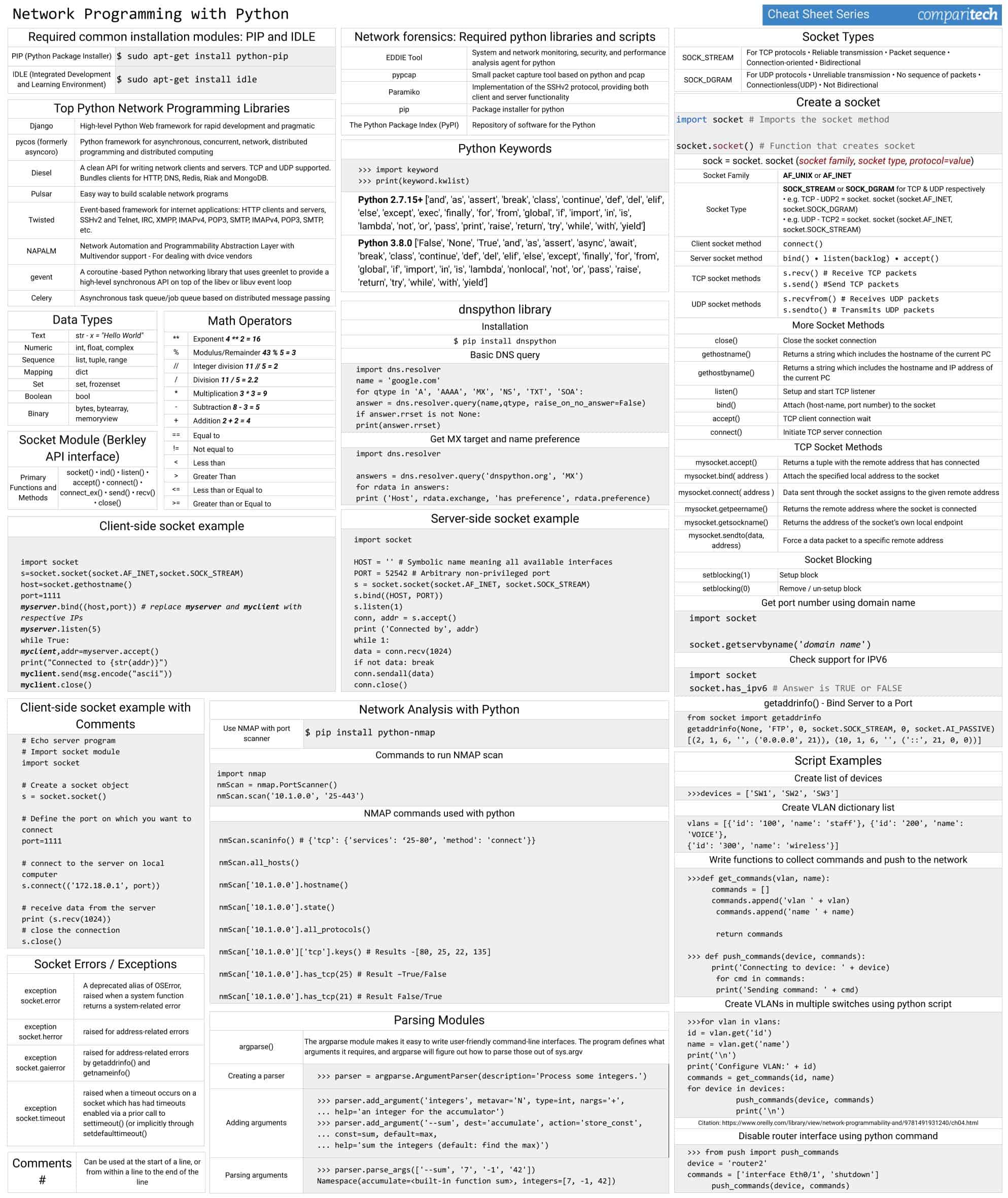


Secure File Transfer Protocol Sftp Commands Cheat Sheet



D 6 Permission Issues And How To Troubleshoot Engineering Libretexts



Linux File Permissions Chmod Umask Tutonics Linux Reading Writing Tutorial
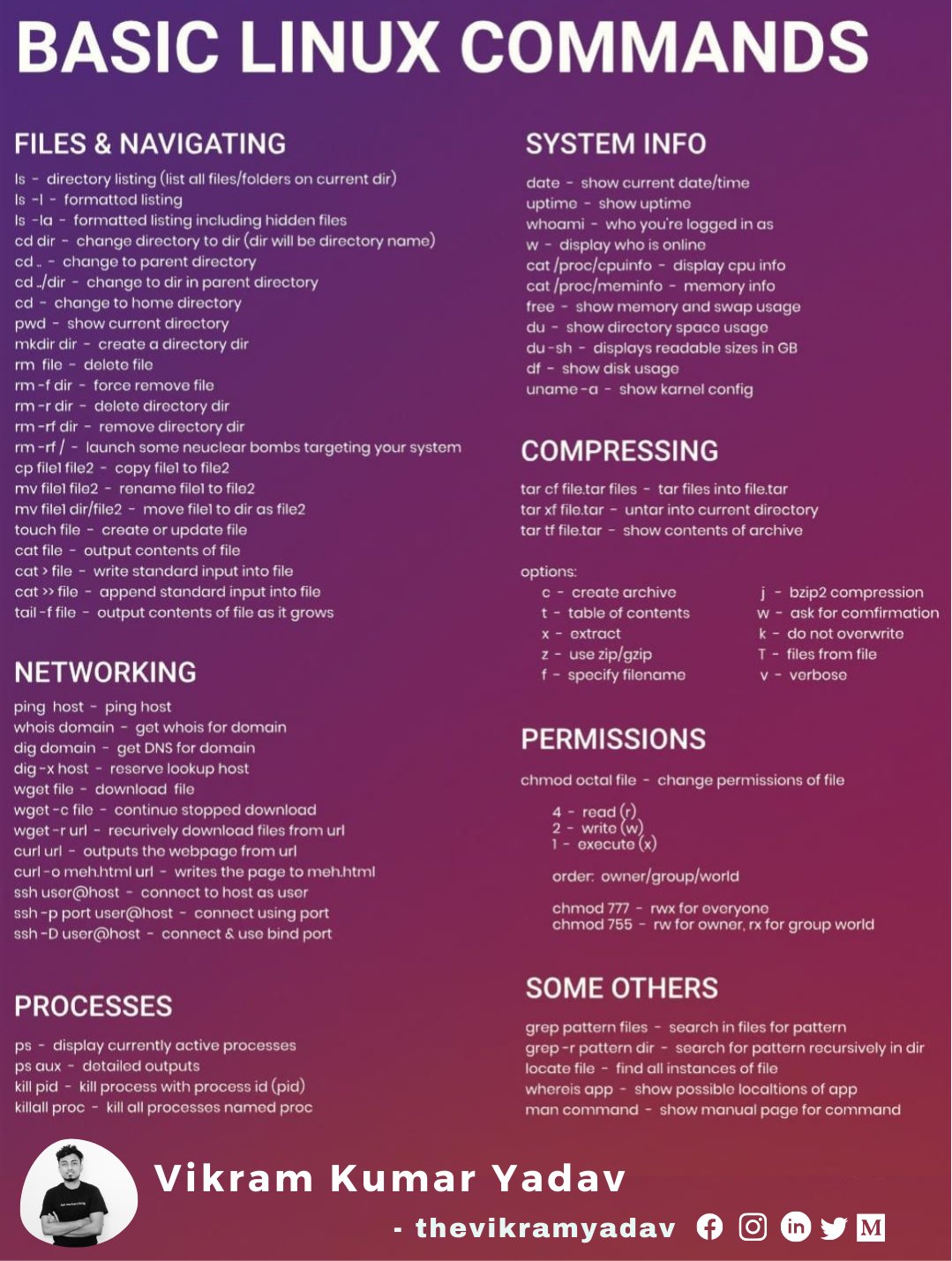


Vikram Kumar Yadav Newbie Linux Command Cheat Sheet Linux Commands New Splunk Linux Hacking Vikram Programming Cybersecurity Coding Thevikramyadav Softwaredeveloper Devops Programmingmemes T Co Ae7avzd2mm
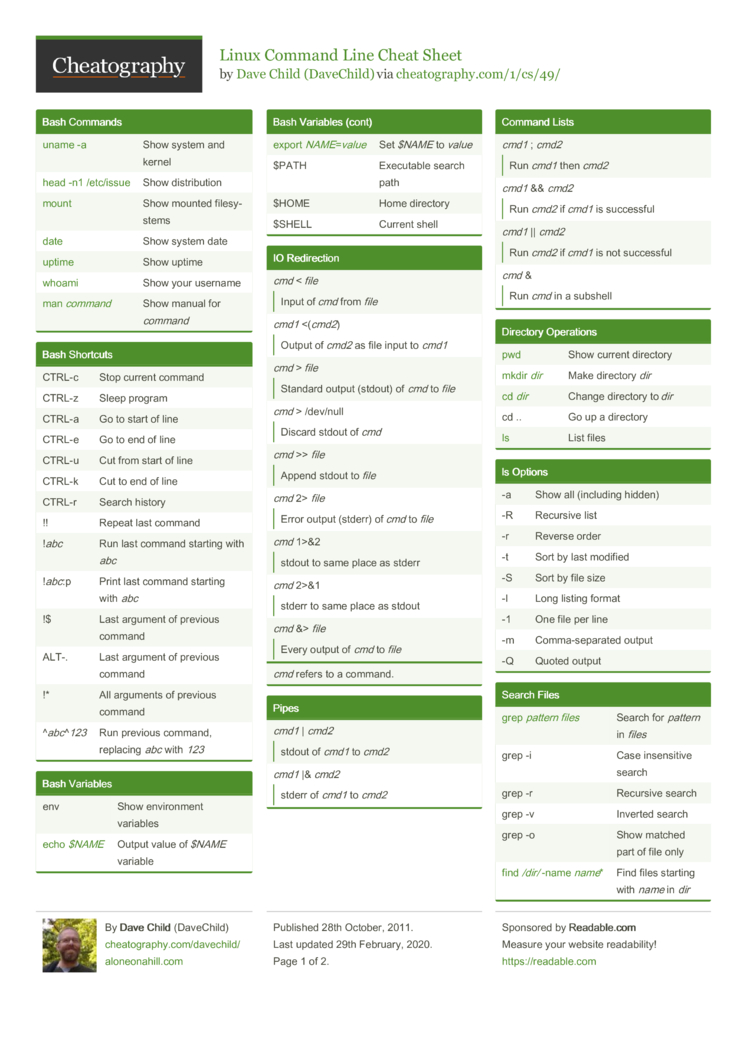


Linux Command Line Cheat Sheet By Davechild Download Free From Cheatography Cheatography Com Cheat Sheets For Every Occasion



File Permissions In Linux Unix How To Read Write Change
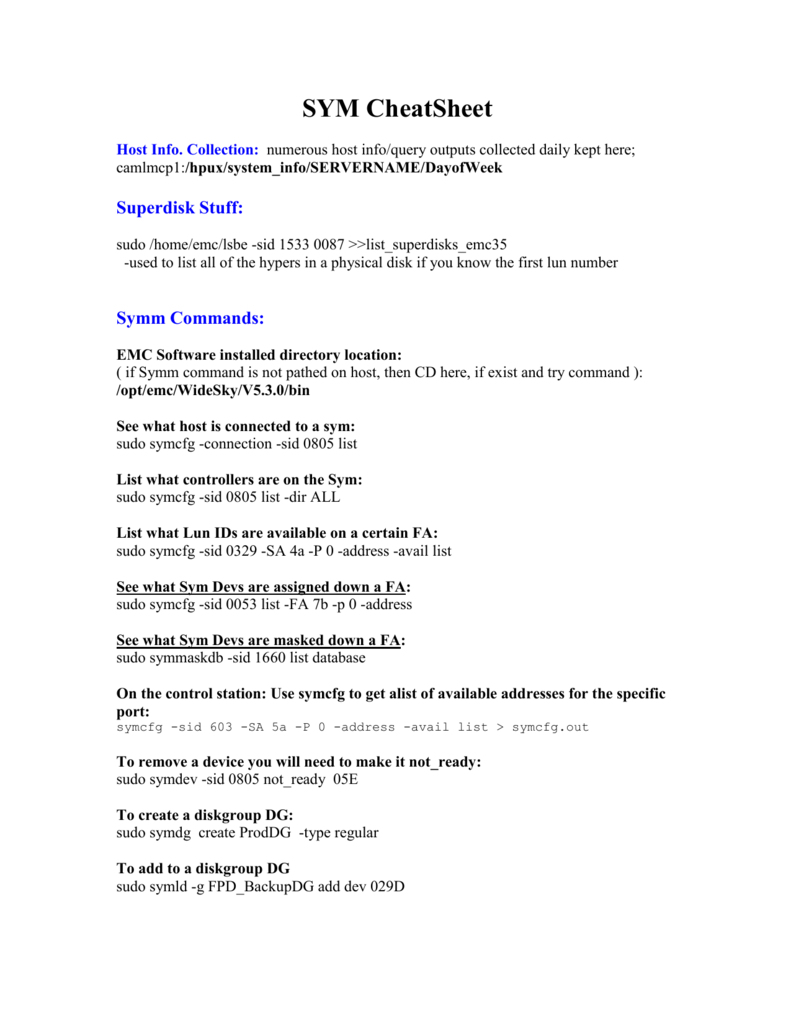


Cheat Sheet



Chmod Octal Chart Zerse
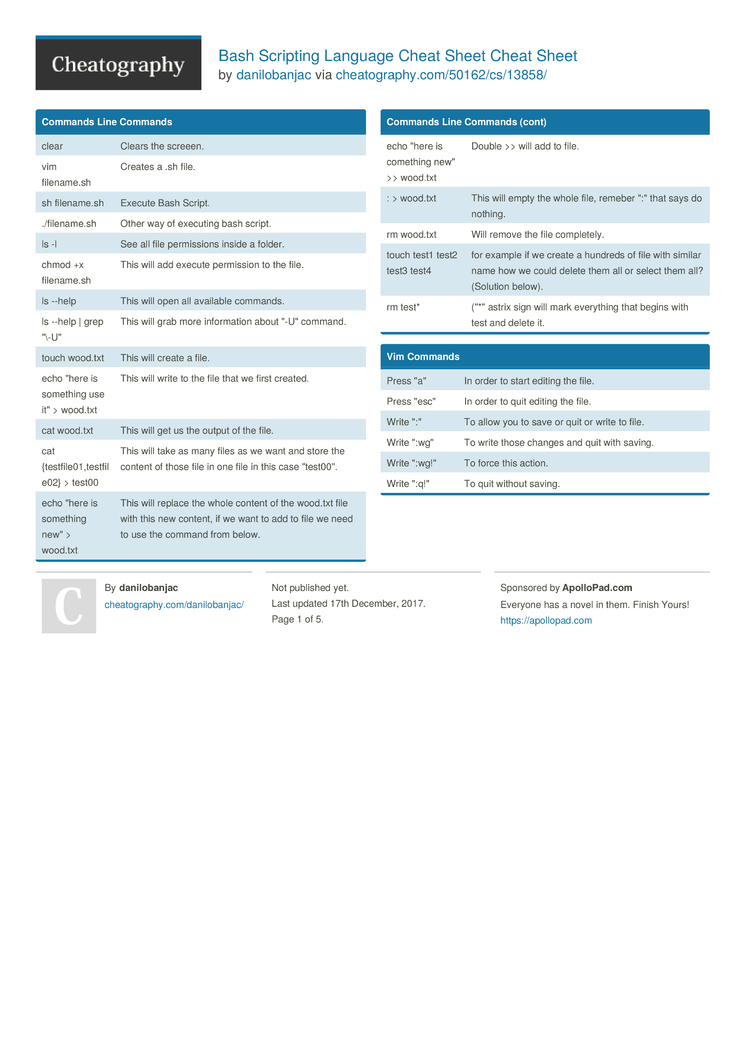


Bash Scripting Language Cheat Sheet Cheat Sheet By Danilobanjac Download Free From Cheatography Cheatography Com Cheat Sheets For Every Occasion
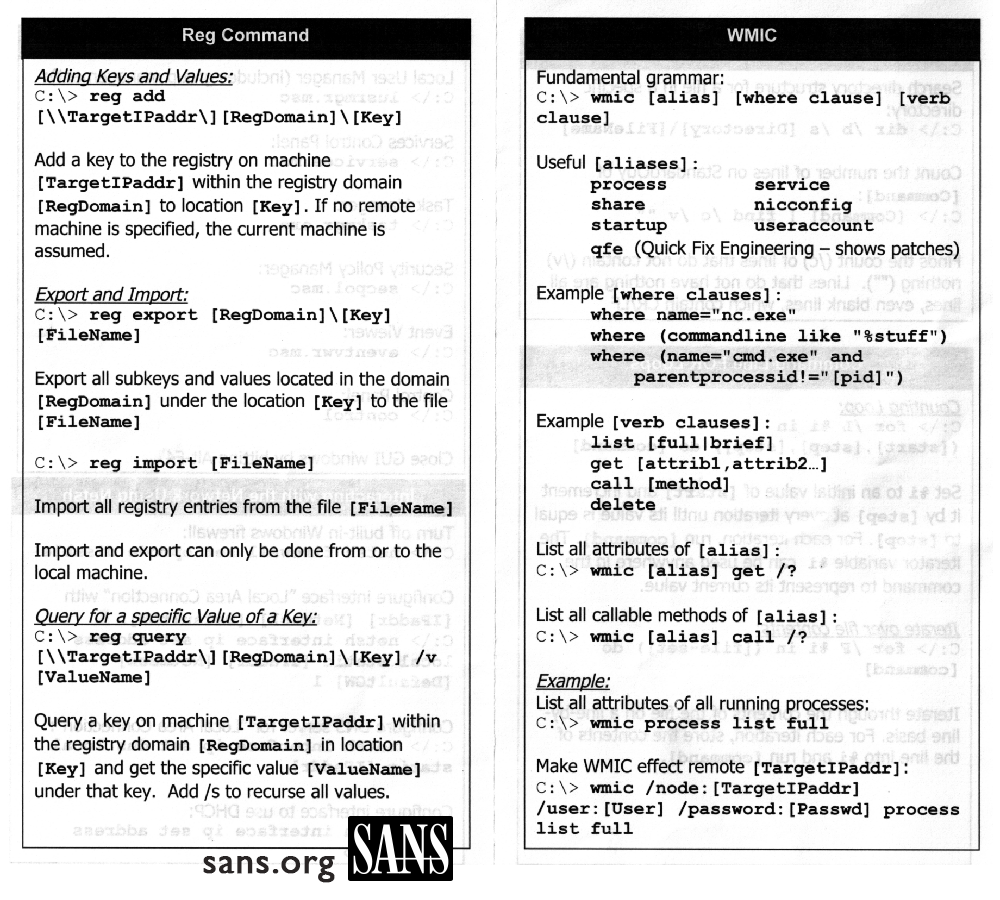


Windows Command Line Cheat Sheet Easysitehello
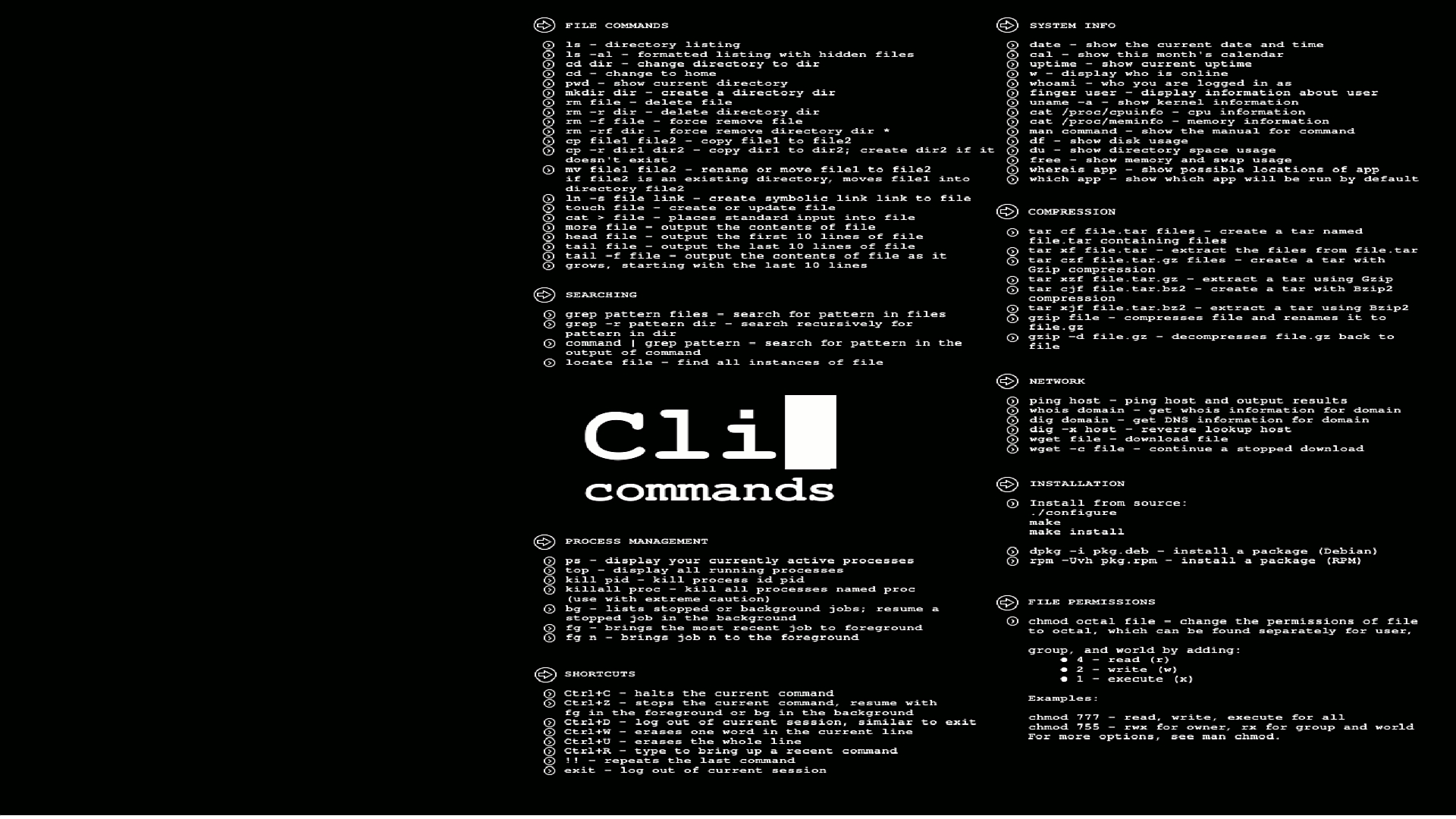


49 Linux Command Wallpaper On Wallpapersafari



Chmod Octal Chart Zerse



How To Resolve Permission Denied Linux Error Ux Techno



Linux Test 6 Cheat Sheet By Georgewb13 Download Free From Cheatography Cheatography Com Cheat Sheets For Every Occasion
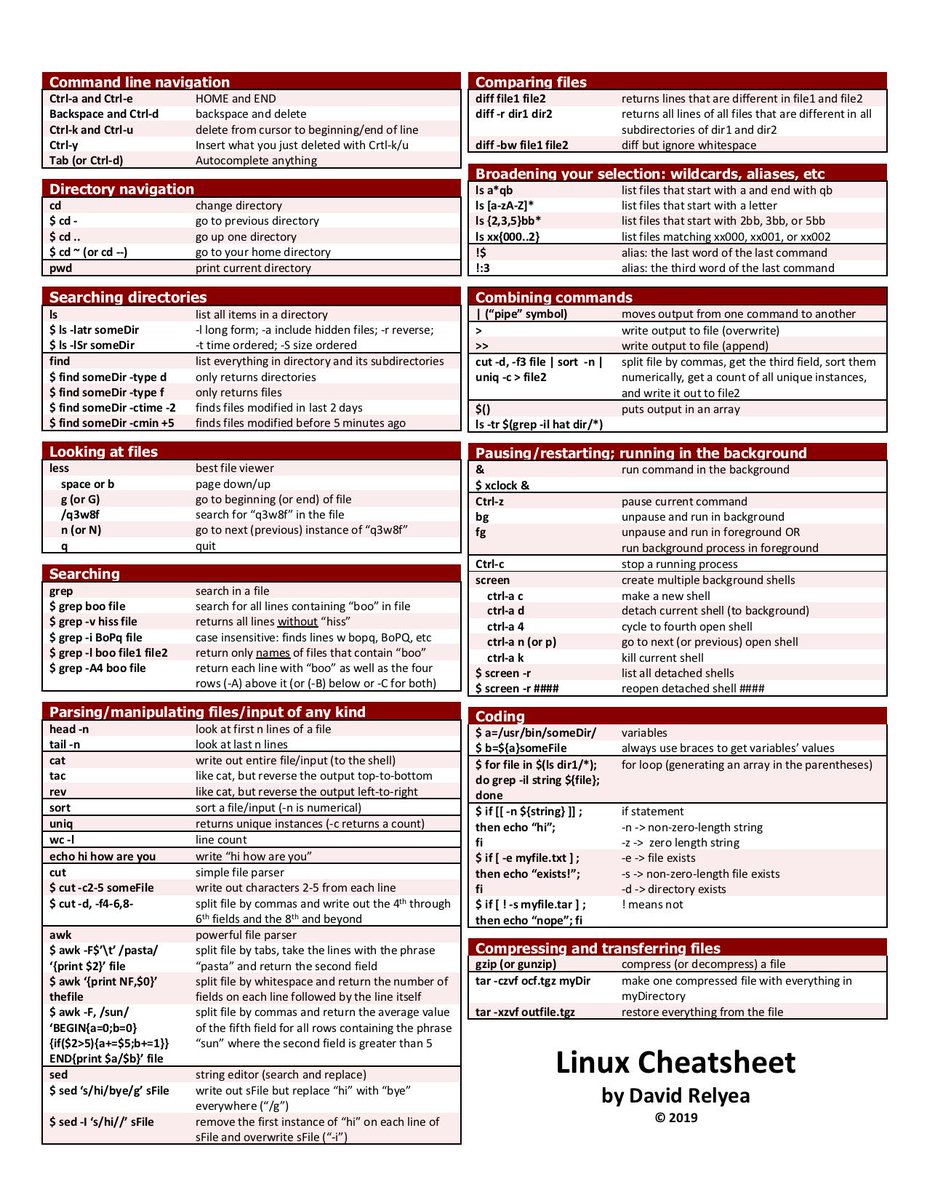


Hardmaru Useful Linux Cheat Sheet For Data Scientists



Linux Permissions Chart Page 1 Line 17qq Com



Learn Basic Linux Commands With This Downloadable Cheat Sheet Linux Cheat Sheets Cheating



The Linux Command Line Cheat Sheet Network World



Cli Linux Cheatsheet Conky By Void00r On Deviantart



How To Manage Linux Permissions For Users Groups And Others Enable Sysadmin



Linux Command Line Cheat Sheet Pdf Docsity
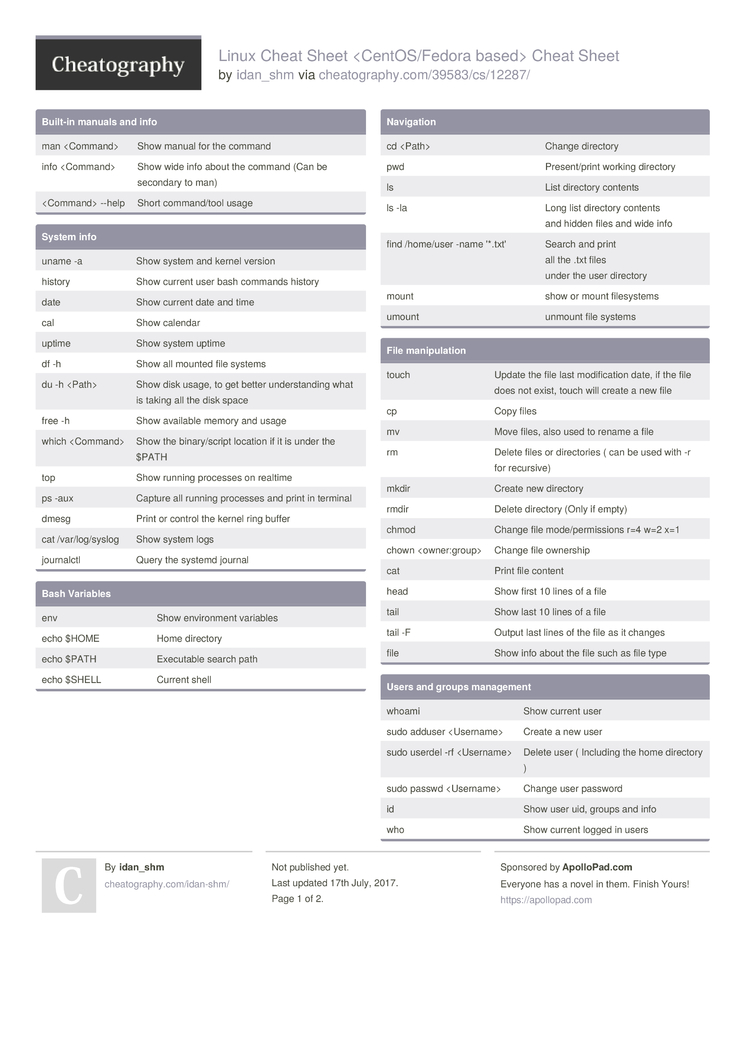


Linux Cheat Sheet Centos Fedora Based Cheat Sheet By Idan Shm Download Free From Cheatography Cheatography Com Cheat Sheets For Every Occasion
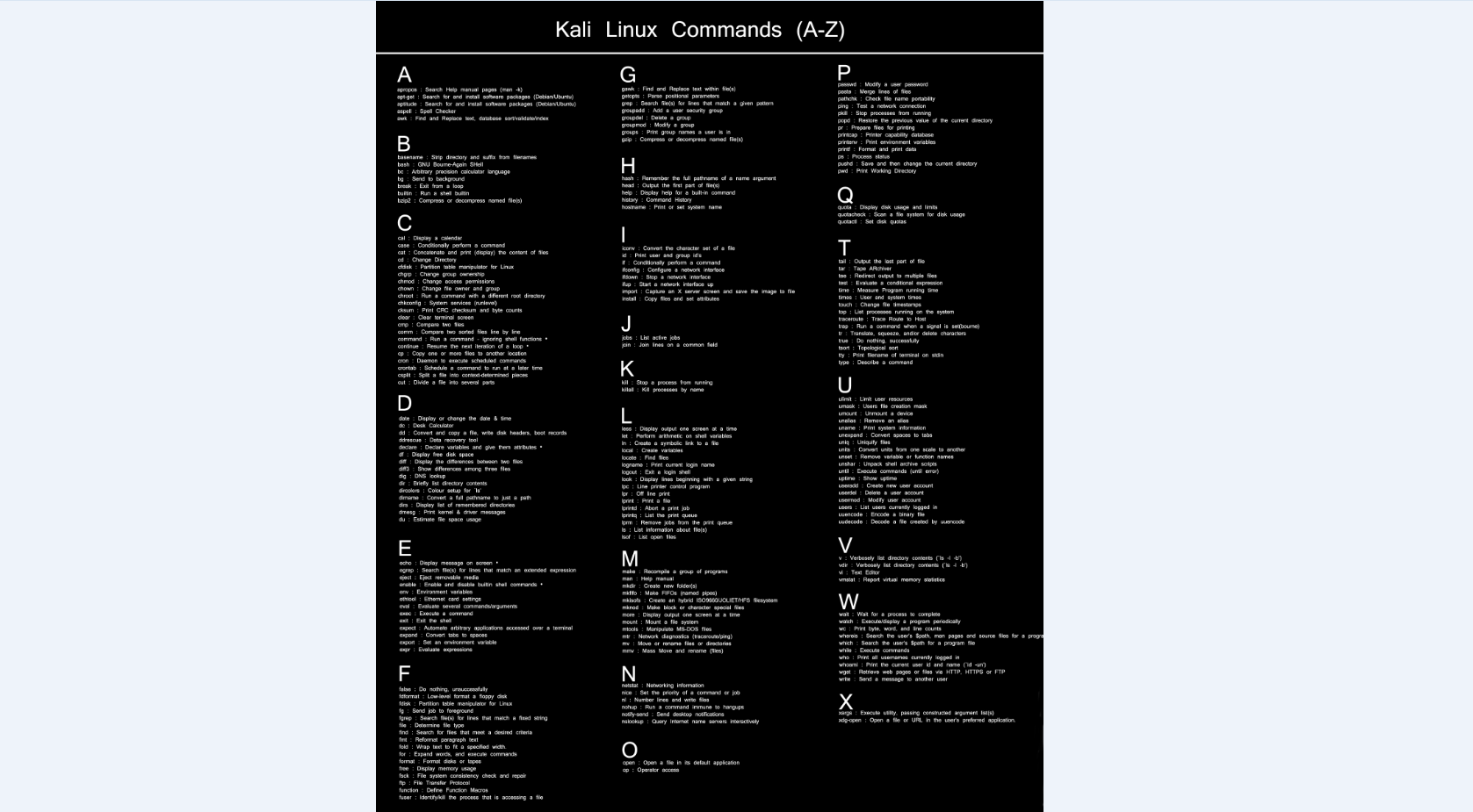


Linux Commands Cheat Sheet



3x Beginner Friendly Linux Wallpaper Commands Linux Level1techs Forums
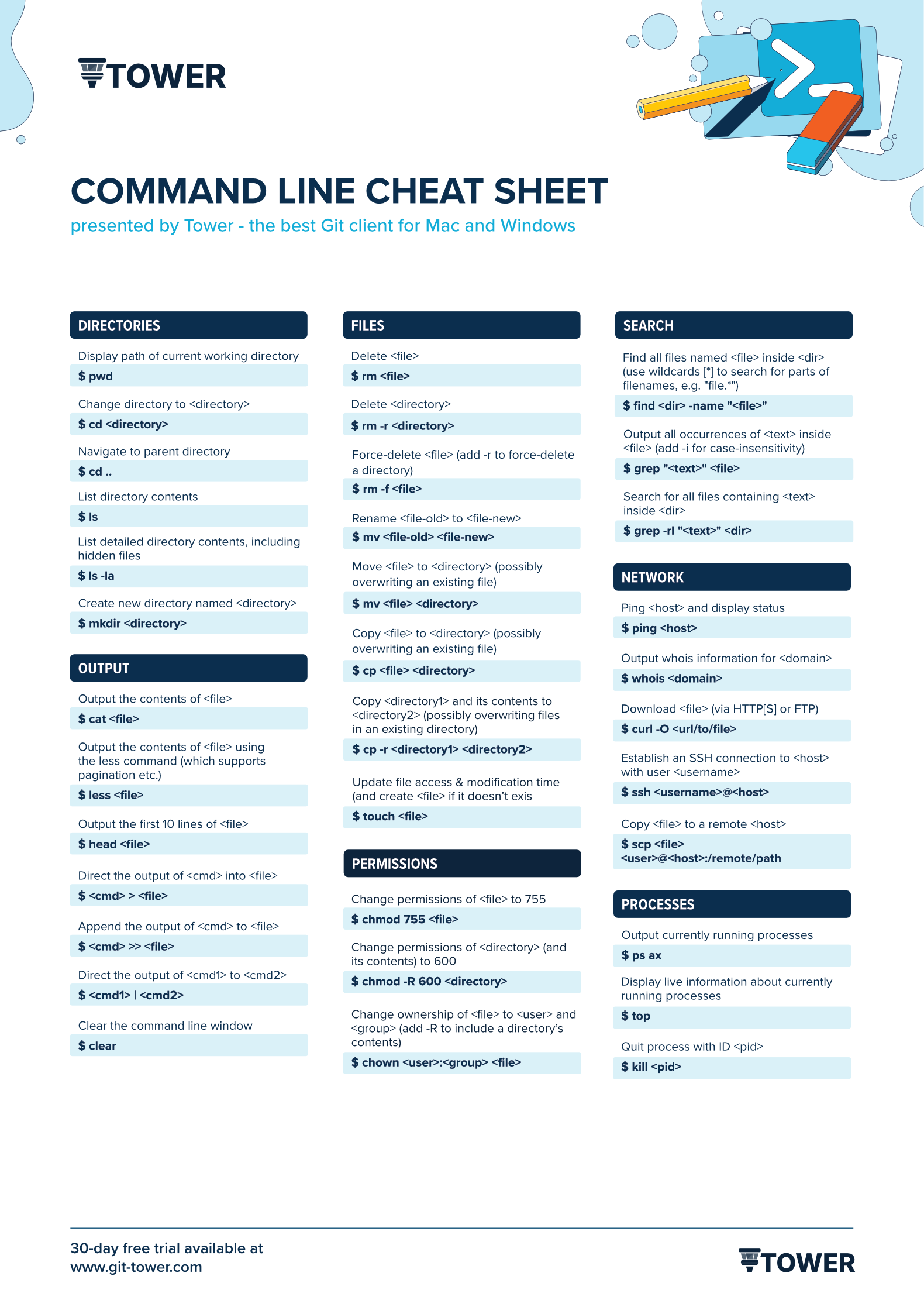


Command Line Cheat Sheet Learn Version Control With Git
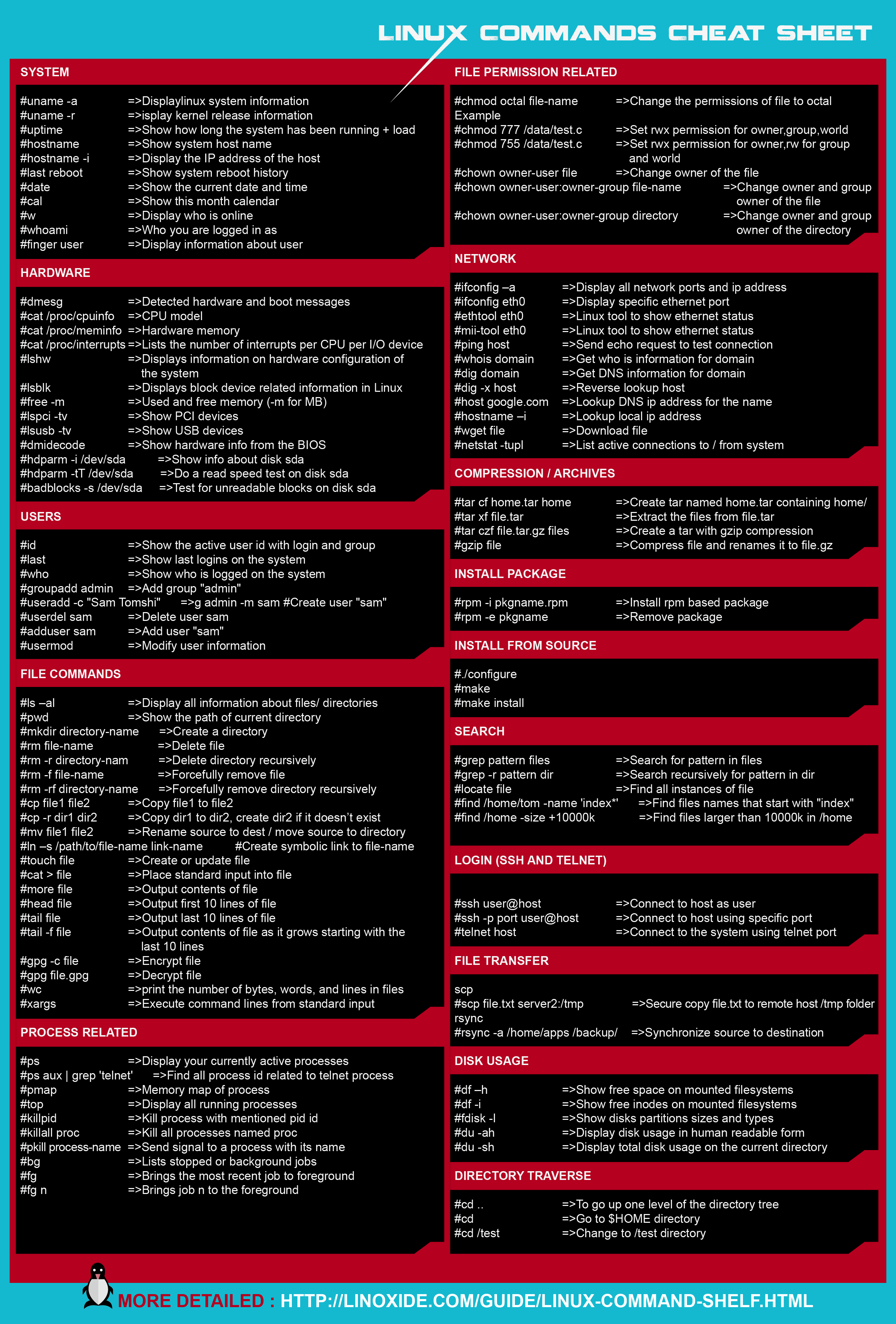


Download This Cheat Sheet To Learn Basic Linux Commands Techworm
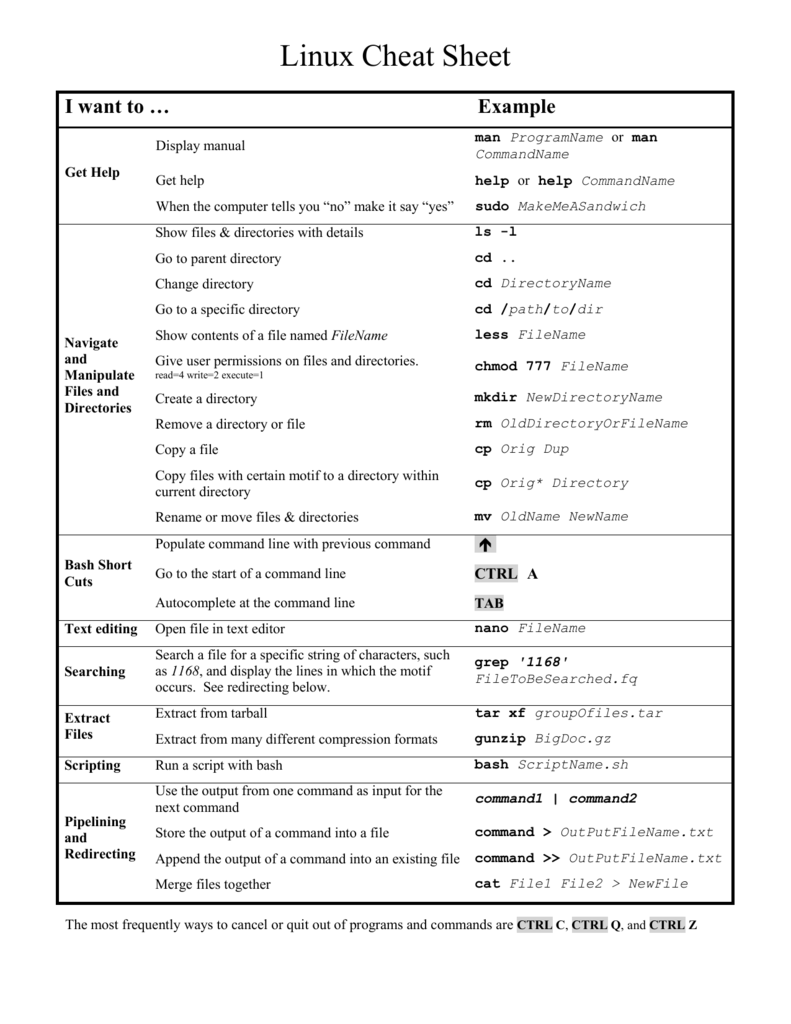


Linux Cheat Sheet


Some Linux Commands Cheat Sheet Linux



Terminal Cheatsheet Unix Software Utility Software
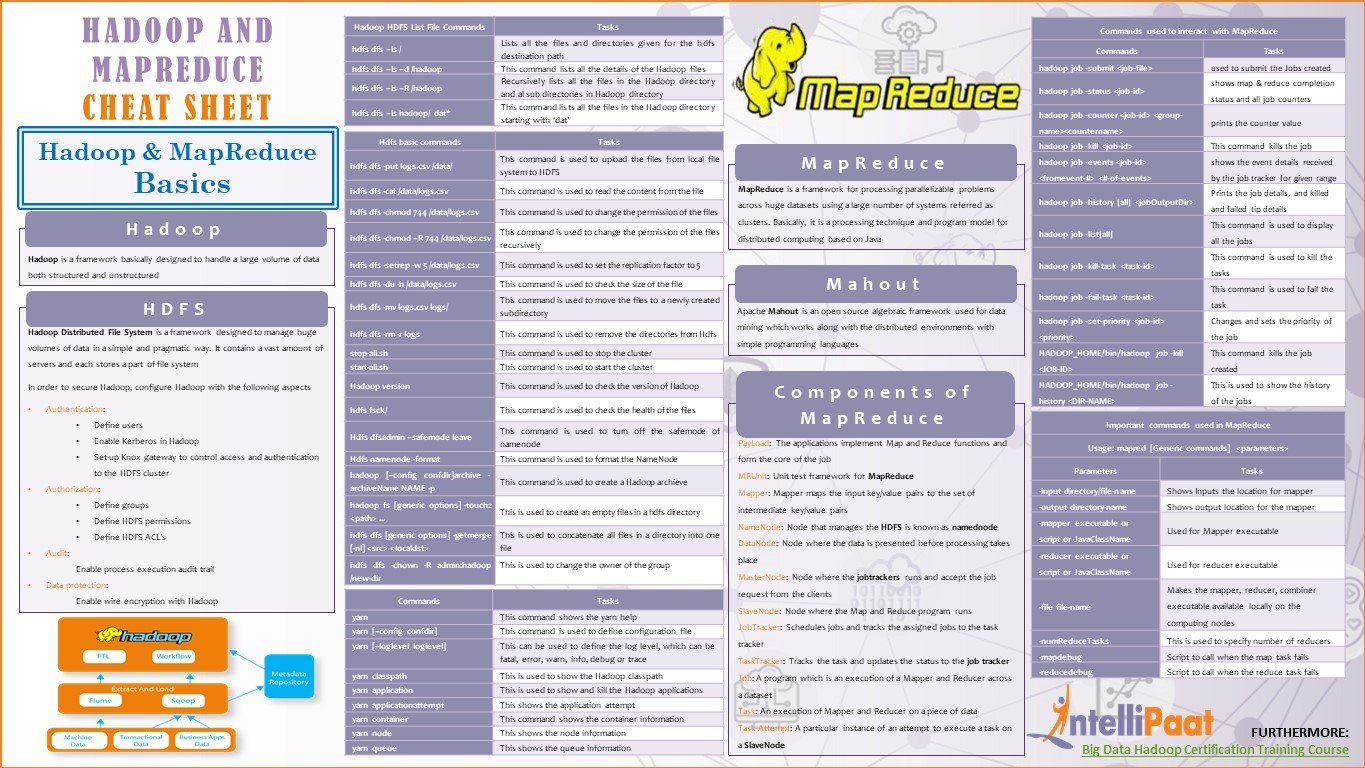


Hadoop And Mapreduce Cheat Sheet Intellipaat Blog
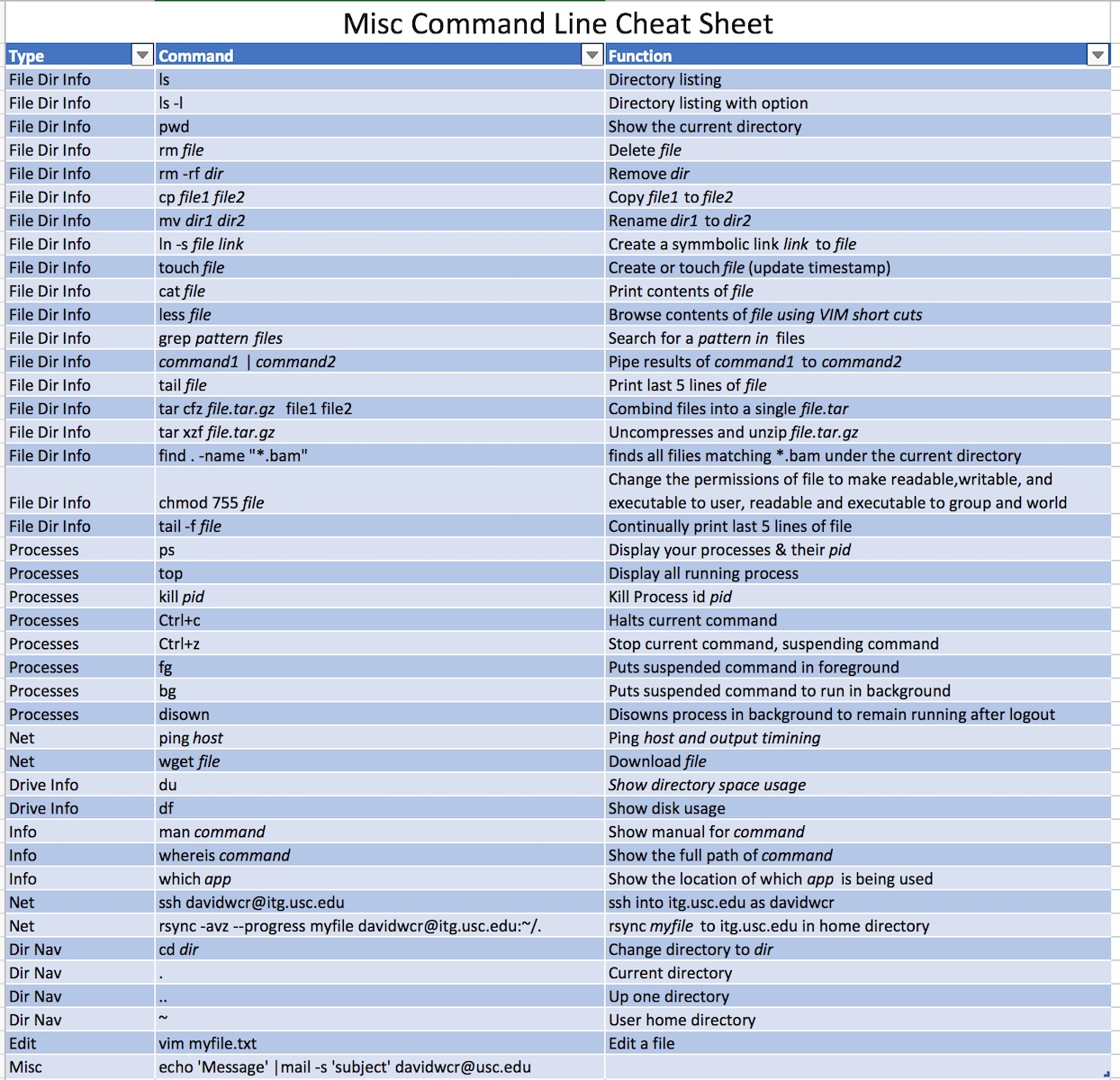


Command Line Bash Department Of Translational Genomics



Linux Cheat Sheet Computer File Booting



Command Line Cheat Sheet With Text Editors Vim Nano Dev Community



Sysadmin Juan S Cheatsheet Cheat Sheet By Jj973 Download Free From Cheatography Cheatography Com Cheat Sheets For Every Occasion
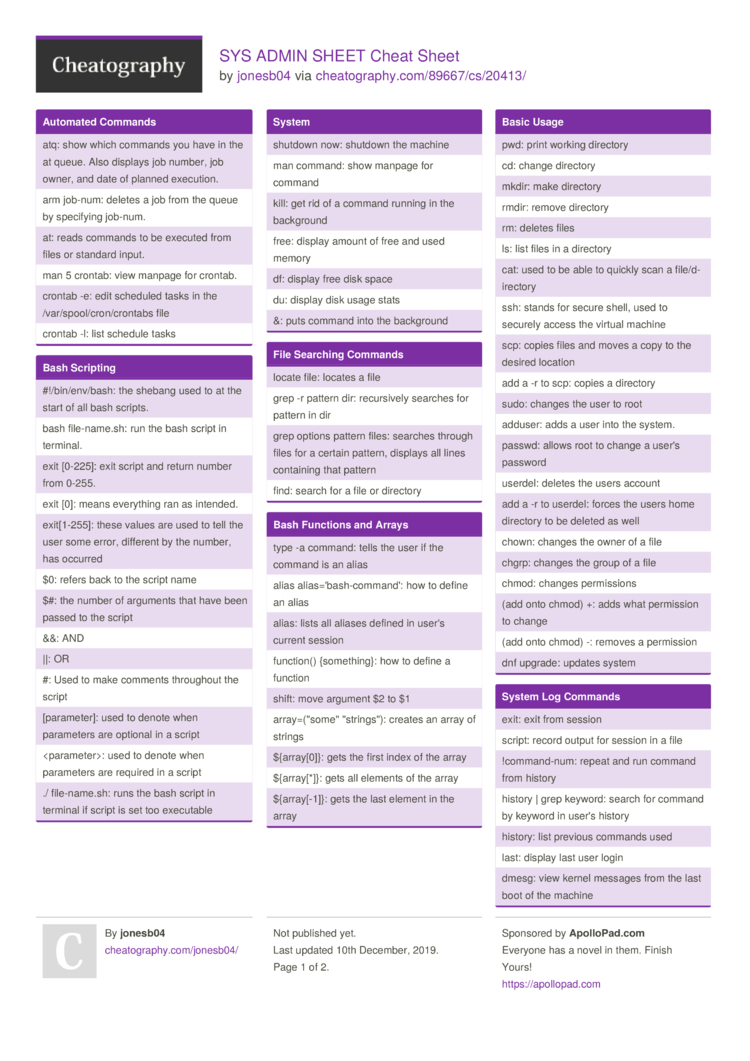


Sys Admin Sheet Cheat Sheet By Jonesb04 Download Free From Cheatography Cheatography Com Cheat Sheets For Every Occasion
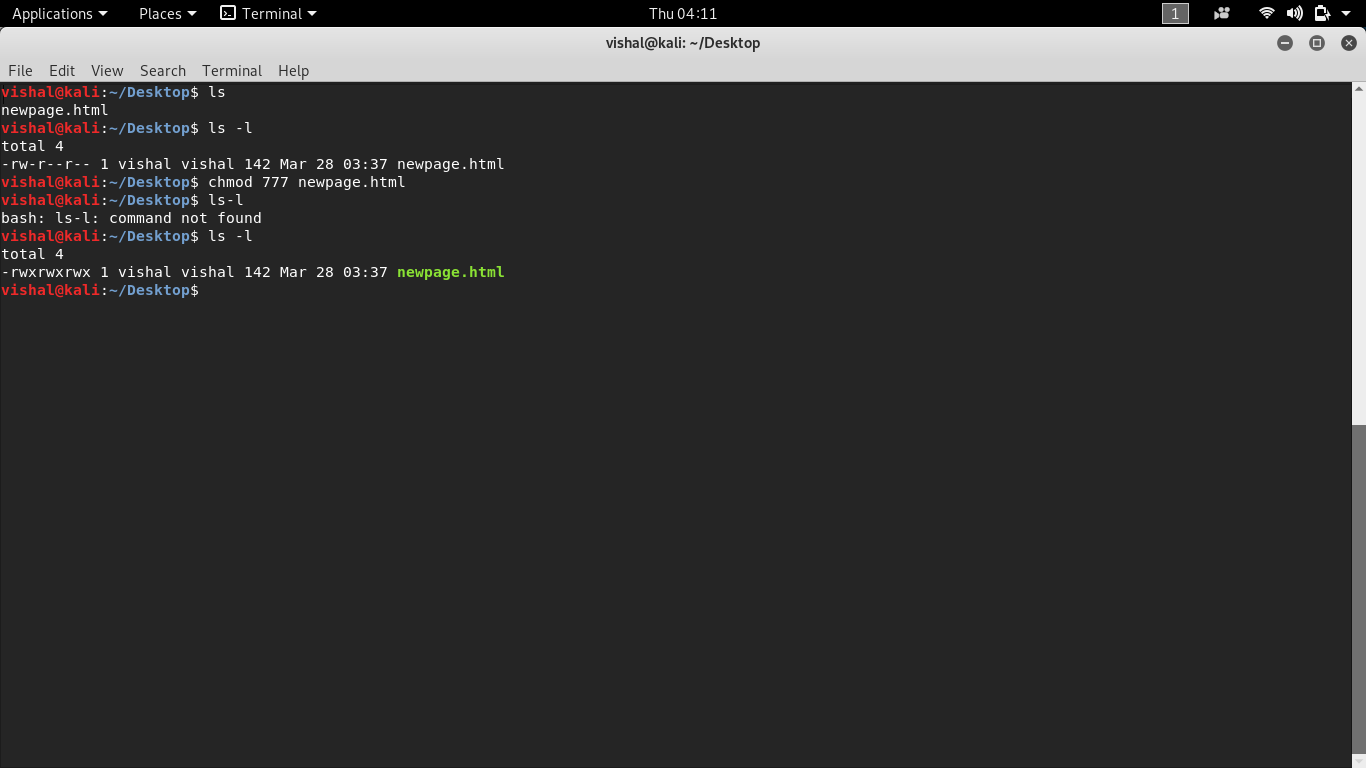


Unix Commands Basic To Advanced Unix Commands With Example



Soc Linux Cheatsheet Secure Shell Computer File



Linux Cheat Sheet Commands Pdf Download Printable
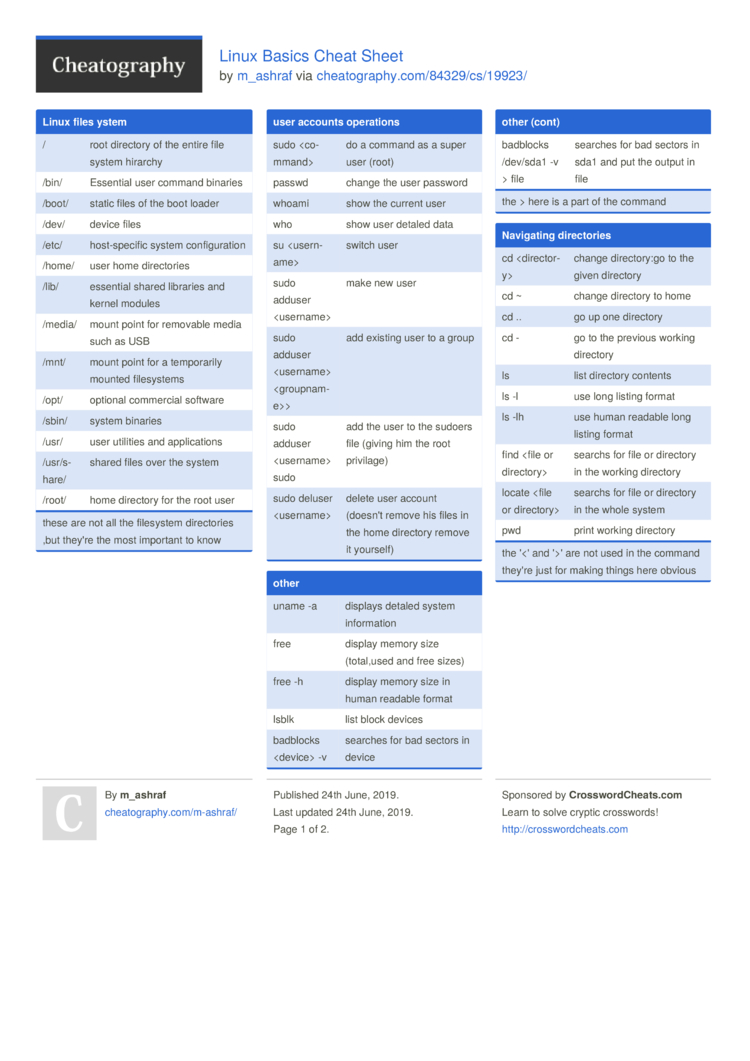


Linux Basics Cheat Sheet By M Ashraf Download Free From Cheatography Cheatography Com Cheat Sheets For Every Occasion
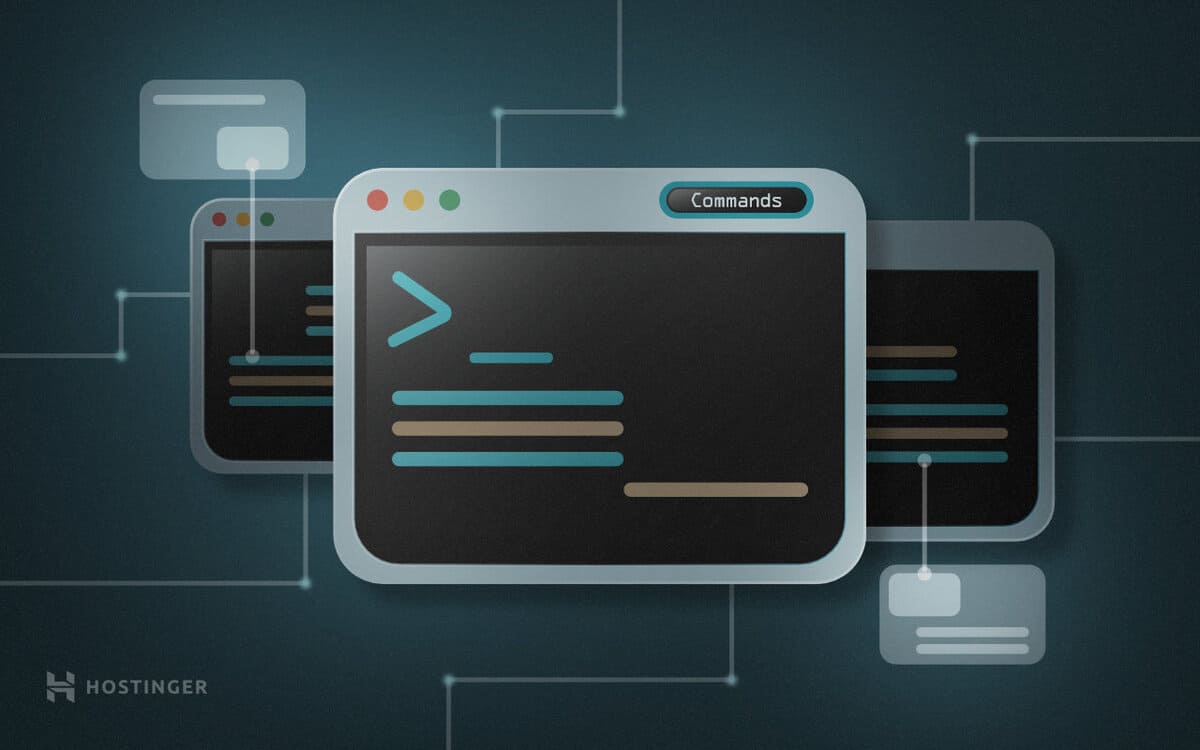


35 Linux Basic Commands Every User Should Know Cheat Sheet


I Made This Chmod Cheat Sheet And Thought It Might Be Useful Linux4noobs



Bash Cheat Sheet Top 25 Commands And Creating Custom Commands
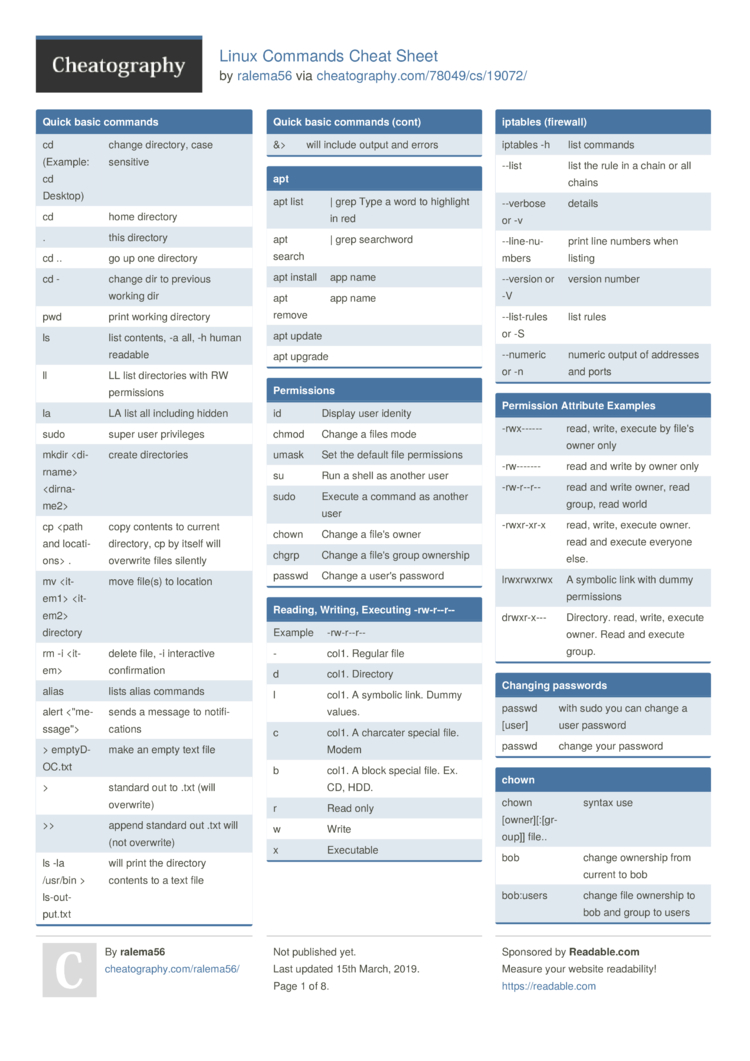


Linux Commands Cheat Sheet By Ralema56 Download Free From Cheatography Cheatography Com Cheat Sheets For Every Occasion



Unix Permissions The Easy Way Index Of All Chmod Permutations By Semi Koen Towards Data Science



Frequently Used Cheat Sheet For Linux System Operation And Maintenance Personnel Programmer Sought
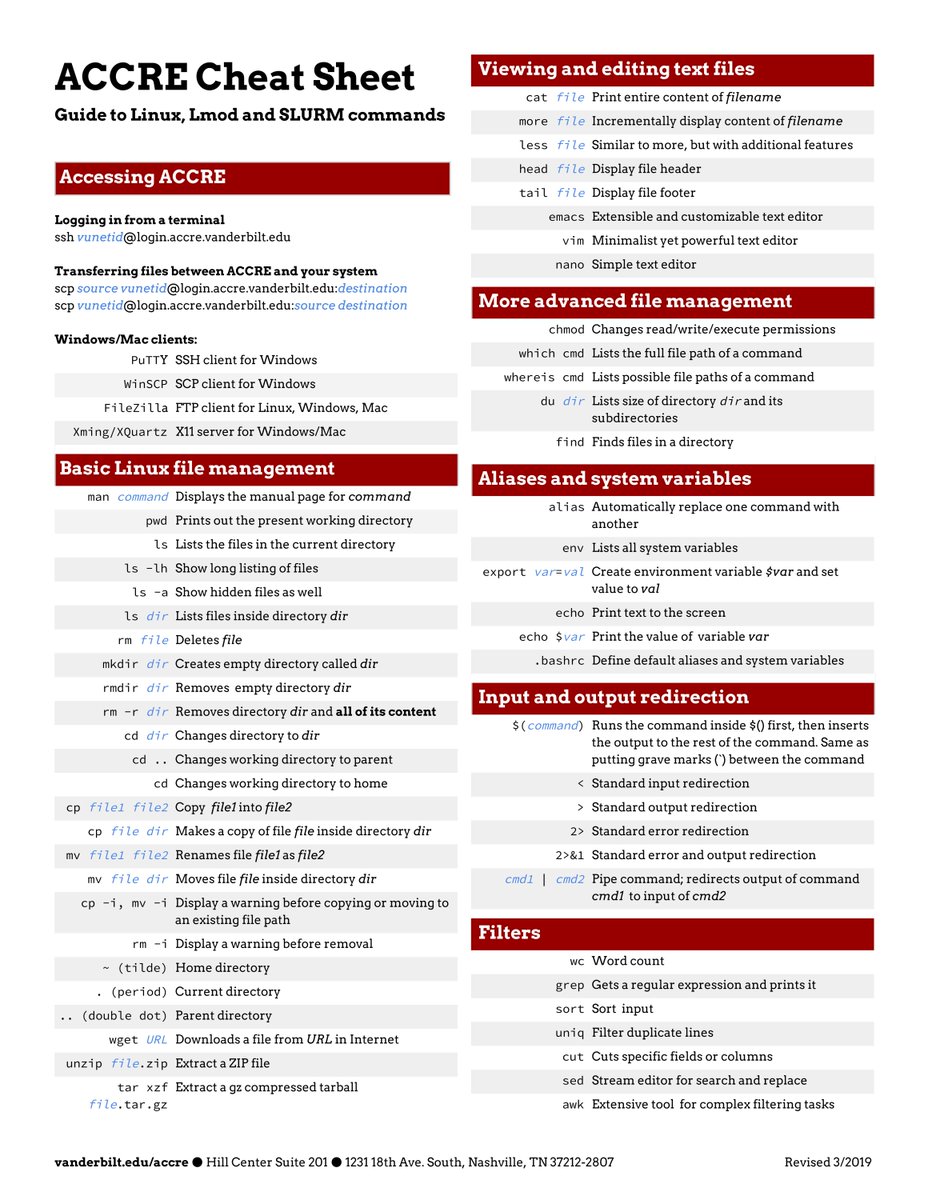


Accre Vanderbilt While We Re Waiting For The Accre Website To Return Here Is The Cheat Sheet Of Linux Lmod And Slurm Commands If Anyone Needs To Look Them Up Over



Cyber Technique Kali Linux Commands Cheat Sheet


